Yes, you can drill into the siding of a house, but it's essential to use the right tools and techniques. Use a drill with the appropriate bit, avoid damaging underlying structures, and seal holes to prevent water intrusion.
Embarking on home improvement projects can be both thrilling and nerve-wracking, especially when it comes to drilling into the siding of your house. As a passionate DIY enthusiast who values practical solutions, I understand the importance of making informed decisions. In this blog post, we'll dive into the age-old question: Can you drill into the siding of your house? Join me on this journey as we explore the dos, don'ts, and essential tips to ensure your home enhancement endeavors are both successful and stress-free.
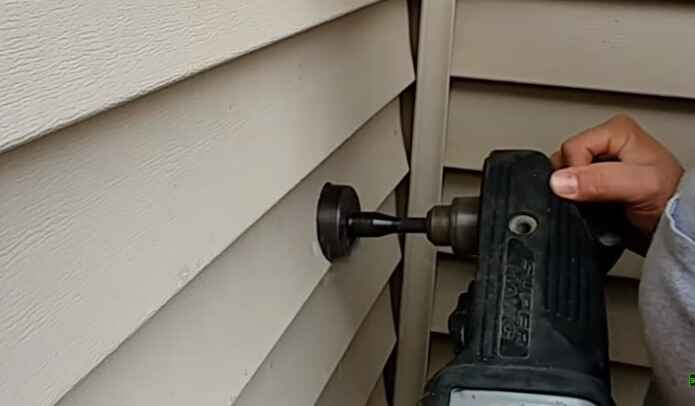
Yes, you can drill into the siding of a house as long as you take proper precautions and use the right tools and techniques. It's important to know what type of siding you have and to use the appropriate drill bit and fasteners for your specific siding material. Additionally, avoid any electrical wiring or plumbing behind the siding and properly patch and seal any holes to prevent water damage.
Types of Siding
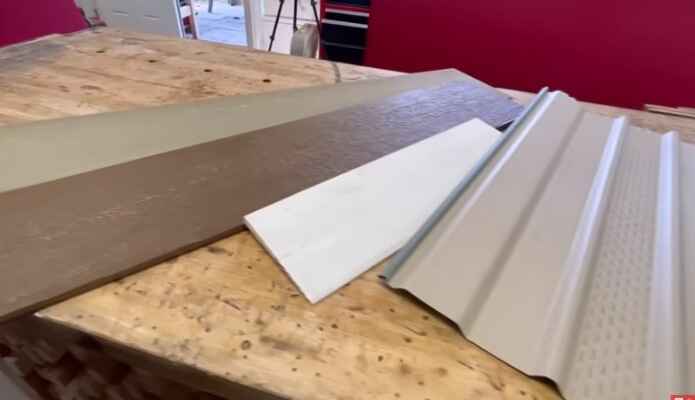
Siding is an important part of any home's exterior, protecting your home from the elements while also adding to its visual appeal. There are many types of siding materials, each with different benefits and drawbacks.
A. Vinyl siding
Vinyl siding is popular due to its affordability, low maintenance, and wide range of colors and styles. It can also be easily installed and offers excellent protection from the weather.
B. Aluminum siding
Aluminum siding is durable and can last for decades with minimal upkeep. It is also resistant to moisture and fire, making it a safe option for homeowners.
C. Wood siding
Wood siding is an attractive choice with various colors and textures that can be customized to your home's design. It requires more maintenance than other types of siding but offers excellent insulation and protection from the elements.
D. Stucco siding
Stucco siding is a classic option that offers superior protection from weathering and damage due to its durability and strength. It has a unique look and feels, with many color options available, but it does require regular upkeep if used in areas prone to high winds or heavy rains.
No matter what type of siding you choose, it will add value to your home while providing lasting protection against the elements.
How to drill into the siding of a house?
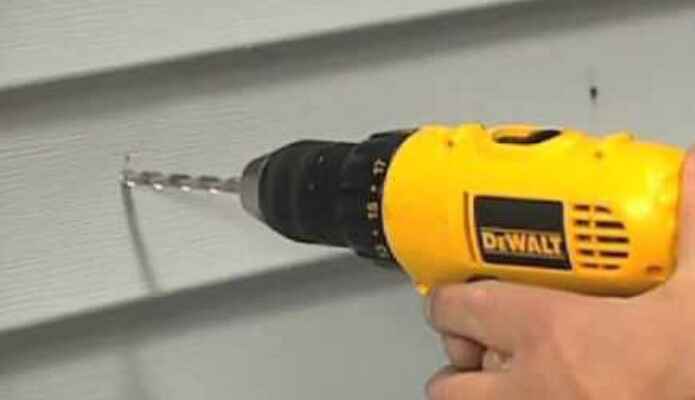
Drilling into siding is easier than it sounds. You can safely and effectively drill into your siding with the right tools and a few easy steps.
1. Preparation:
Before drilling, make sure to make the necessary preparations for safety. Gather all the tools you will need and ensure the surface is clean. Wear safety goggles and wear ear protection to avoid potential hazards.
2. Marking:
Use a pen or marker to identify where to drill holes in your siding. Ensure the marks are level and precise so that the drill bits will not slip or cause any damage.
3. Selecting Drill Bits:
Choose the right size and type of drill bit for your project, depending on the material of your siding. If drilling into wood, use a spade bit with teeth; if drilling into plastic, use a stepped drill bit with a cutting edge; if drilling into metal, use an HSS (High-Speed Steel) drill bit with sharp edges.
4. Setting Up:
Securely mount the drill onto a table or bench and attach it to the siding with clamps. Make sure the drill is parallel to the surface of your siding for an accurate hole.
5. Drilling:
Turn on your drill and slowly begin drilling into the marked area in the siding. Keep the drill speed consistent, and make sure not to apply too much pressure, as this can damage or warp your material.
6. Finishing Touches:
After drilling all holes, use a file or sandpaper to smooth out any rough edges that may have been caused during drilling. This will help ensure that your finished product looks neat and professional.
7. Clean Up:
When you are finished, unplug the drill and securely store all tools. Remember to clean up any debris from the drilling surface, and consider using a lubricant or sealant to protect the siding from further damage.
How to Choose the Right Drill for the siding of a house
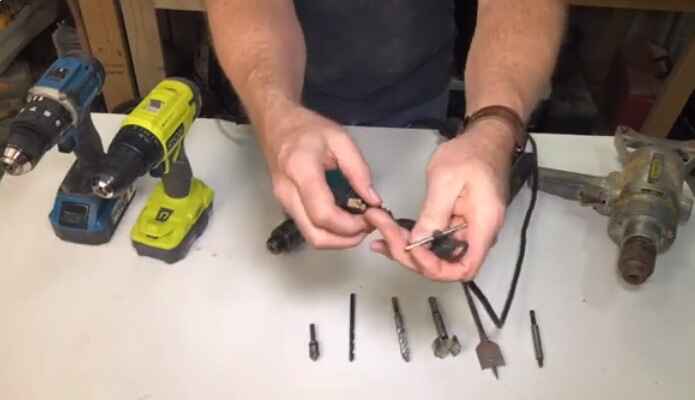
Installing siding requires the right drill. Choosing the wrong drill can result in a botched job and even cause injury. Here are five essential considerations when selecting a drill for siding:
1. Power Level:
A powerful enough drill makes all the difference. Look for one with an amp rating between 10-18 and a variable speed trigger. This will give you the maximum range of control when drilling into different surfaces.
2. Weight:
A lightweight drill is key when working with siding as it minimizes fatigue and makes hard-to-reach areas easier to tackle. Check for a model that doesn't weigh more than five pounds so that you can finish the job with minimal effort.
3. Drill Bits:
Drill bits vary in size, shape, and materials (coated or uncoated). Copper-cobalt drill bits are especially useful for siding because they remain sharp despite frequent use. Make sure to buy a set with multiple drill bit sizes for various applications.
4. Ergonomics:
The handle design matters when selecting a drill for siding since you'll use it for long periods. Look for an ergonomic model with a comfortable rubber grip, so you don't strain your hands during the job.
5. Battery Life:
For extended jobs, look for a cordless drill with long-lasting battery life. Lithium-ion batteries can provide up to two hours of continuous use and quickly recharge, so you can get the job done without worrying about running out of power.
By considering all these considerations, you can find the perfect drill for your siding project and ensure that it's installed correctly and safely.
What are the benefits of drilling into siding?
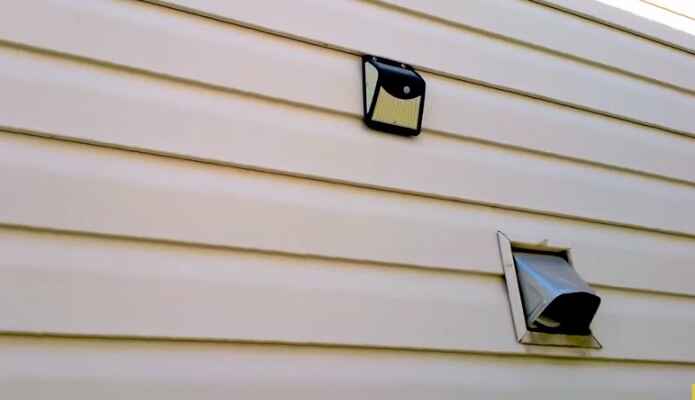
Drilling into siding offers many advantages.
1: Improved Functionality
Drilling into siding is a great way to improve the functionality of your home or building. It helps to secure windows, fixtures, and other objects securely to walls without needing nails or screws. This improves both the aesthetic appeal of the space and its overall stability. Additionally, drilling into siding ensures that objects are securely fastened and won't come loose over time.
2: Easy Installation
Drilling into siding is straightforward to do. It requires minimal tools and basic knowledge of how to use them, making it a relatively simple task. Furthermore, with the right care and attention, drilling into siding can be done quickly and efficiently.
3: Durability
Drilling into siding helps to create strong connections that are reliable and durable. This reduces the risk of objects becoming loose or damaged over time, ensuring they remain secure and stable long-term. Additionally, drilling into the siding provides a tight seal between the attached object and the wall, ensuring nothing is exposed to potential water damage.
4: Cost-Effective
Drilling into siding is a cost-effective solution for attaching objects to walls. It requires minimal tools and materials, meaning it can be done cheaply if you already have the necessary equipment. Moreover, with the right care and attention, drilling into siding can last many years, making it a significant investment in the long run.
5: Versatile
Drilling into siding is incredibly versatile for securely attaching objects to walls. It doesn't matter what type of object you're attaching or what material your siding is made from. Drilling into siding can be done successfully with most materials and objects. This makes it a great option for almost any situation requiring secure connections without nails or screws.
Tips for Drilling into Vinyl Siding

Installing hardware into vinyl siding is simple with the right tools and knowledge. Here are five tips to make the process easier:
1. Use the Right Type of Drill Bits
For holes in vinyl siding, use good quality sharp drill bits made specifically for drilling into vinyl. Specialized bits have small points and wider flutes to help remove excess material quickly and efficiently.
2. Start with Smaller Bit, Widen as Necessary
Start by pre-drilling a hole with a bit that is slightly smaller than the screw or hardware being used. This will prevent the vinyl from cracking when the actual hole is drilled. Widen the hole as necessary to accommodate larger screws and hardware.
3. Use Clamps, Avoid Hand Pressure
When possible, use clamps to hold your workpiece in place during drilling. This will prevent the vinyl from shifting and cracking during the drilling process. Avoid using hand pressure as it can cause damage to the siding material.
4. Use a Sturdy Drill Stand, No Freehand Drilling
When drilling into vinyl siding, using a drill stand or bench clamp to secure your equipment is essential. Freehand drilling can cause the drill to slip, damaging the siding and causing uneven hole size.
5. Monitor Speed
Use a low speed setting on your drill and apply gentle pressure as you drill through the material. A slow speed will help ensure a smooth, even hole and avoid cracking or splitting of the vinyl siding.
Tips for Drilling into Aluminum Siding
Drilling into aluminum siding can be tricky. Here are a few tips to get the job done right:
1) Preparing the Drill Bit and Drilling Speed
Prepare your drill bit by coating it with cutting oil. This helps reduce heat buildup while drilling. Set your drill speed to low or medium, depending on the aluminum's thickness. Too much Speed can cause the bit to overheat and dull quickly.
2) Clamp Down the Siding
Ensure that the siding piece is firmly clamped down before drilling. This will ensure that it stays still while you drill, minimizing any damage or errors. Use pieces of wood or other materials to secure the siding in place if needed.
3) Drilling Gradually
Start by drilling a small pilot hole before gradually working your way up in size. This will help you avoid any mistakes and ensure that the holes are of the proper size. It also prevents the bit from becoming stuck, leading to dangerous situations.
4) Removing Aluminum Shavings
Be sure to remove any aluminum shavings that accumulate during drilling. This will reduce the risk of clogging and help keep your drill bit in good condition. A vacuum cleaner is a great tool for this job, but you can also use a brush or other materials.
Tips for Drilling into Wood Siding
Drilling into wood siding can seem daunting, but it's easy with the right tools and know-how. Here are four tips to help make your job easier:
1. Choose the Right Drill Bit
A wood drill bit is essential for drilling into the siding. Pick one with a sharp point and wide flutes to help remove wood chips as you drill.
2. Drill Slowly
Take your time when drilling into the siding. Going too quickly can cause the bit to burn or even break. Start by drilling at a low Speed and gently increase the Speed as you drill deeper.
3. Use Pilot Holes
Using pilot holes helps ensure that your screw doesn't wander off track as it's being driven in and helps reduce the splitting of the wood. Mark where you want to drill before starting for accuracy.
4. Secure Siding Before Drilling
To avoid damaging the siding, use clamps or tape to hold it in place before you begin drilling. This helps ensure that the wood doesn't move when you're drilling, which can cause damage.
Tips for Drilling into Stucco Siding
Drilling into stucco can be daunting, but with the right tools and tips, you'll have success! Here are four helpful tips to bear in mind before drilling:
1. Prepare First:
Before drilling, plan where you need the holes and note any obstacles like wiring or pipes. Use a tape measure or level tool to ensure your drill points are accurate.
2. Use a Masonry Bit:
A masonry bit is specifically designed for drilling into hard surfaces like stucco. Make sure the tip is sharp for better results!
3. Choose the Right Drill Speed:
Set your drill at its lowest speed setting when first starting and increase as needed accordingly. This will help you avoid overheating the masonry bit and damaging your drill.
4. Clean Up:
After drilling, use a brush to clean up any debris created while drilling into the stucco. This will help ensure a long-lasting, secure fixture.
Conclusion
In conclusion, drilling into the siding of a house is possible, but it should be done with caution and care. Before drilling, it's essential to ensure that there are no electrical wires or plumbing pipes in the area you plan to drill into. You should also use the appropriate drill bit and take measures to prevent water from entering the hole you create. Additionally, it's important to consider your siding type and follow any specific guidelines or recommendations for drilling into that material. By following these precautions, you can safely drill into your house's siding to install fixtures or make repairs without causing damage or compromising the integrity of your home.